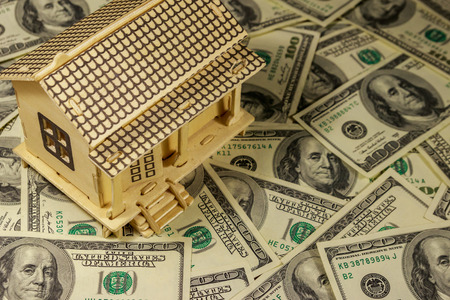1. Understanding the U.S. Real Estate Market
Before investing in real estate in the United States, its important to get a clear picture of the overall market. The U.S. real estate market is influenced by several key factors, including national economic trends, regional differences, and local supply and demand. Understanding these elements helps you make smarter investment decisions.
Key Market Trends
Real estate markets in the U.S. can shift based on consumer behavior, interest rates, and government policies. Here are some trends to watch:
- Interest Rates: Lower interest rates usually make borrowing easier, encouraging more buyers and increasing property values.
- Housing Demand: As population grows or shifts (for example, from urban to suburban areas), demand for housing can rise or fall.
- Rental Trends: In cities with rising rent prices, rental properties may offer better returns than in areas where rents are stable or declining.
Important Economic Indicators
Several economic indicators give insight into the health of the real estate market. Heres a quick overview:
| Indicator | Description | Impact on Real Estate |
|---|---|---|
| GDP Growth | The total value of goods and services produced in the country | A strong economy often leads to higher property values |
| Unemployment Rate | The percentage of people without jobs but actively seeking work | High unemployment may reduce housing demand |
| Inflation Rate | The rate at which prices increase over time | Can impact construction costs and mortgage rates |
Regional Dynamics Matter
The U.S. is a large country with diverse markets. A strategy that works in one state might not work in another. For example:
| Region | Characteristics |
|---|---|
| West Coast (e.g., California) | High property values, tech-driven economies, stricter regulations |
| Southeast (e.g., Florida, Georgia) | Growing populations, affordable housing, investor-friendly laws |
| Midwest (e.g., Ohio, Indiana) | Lower home prices, steady rental demand, slower appreciation |
Pro Tip:
Always research local market conditions before buying. Look into job growth, population trends, and city development plans to get an idea of future potential.
2. Analyzing Location and Neighborhood Metrics
When it comes to real estate investing in the U.S., one of the most important factors is location. A great property in a bad area can be a poor investment, while an average property in a growing neighborhood can bring strong returns. Let’s break down the key elements you should look at when evaluating the location and neighborhood of a potential investment.
School Districts
Good school districts attract families, increase demand, and often help maintain or raise property values. Even if your target tenants don’t have children, properties in top-rated school zones are easier to rent and sell. You can check school ratings on websites like GreatSchools.org.
Example School Rating Table:
| School Name | Rating (1-10) | Distance from Property |
|---|---|---|
| Lincoln Elementary School | 9 | 0.5 miles |
| Jefferson Middle School | 8 | 0.7 miles |
| Roosevelt High School | 7 | 1 mile |
Local Amenities
A neighborhood with easy access to grocery stores, parks, restaurants, public transportation, and gyms is highly attractive to renters and buyers alike. Walkability also plays a big role—people love being close to where they eat, shop, and relax.
Amenities Checklist:
- Grocery Stores within 1 mile?
- Parks or green spaces nearby?
- Cafes and restaurants within walking distance?
- Public transit access?
- Healthcare facilities in the area?
Crime Rates
No one wants to live in a dangerous area. Use sites like NeighborhoodScout or local police department websites to review crime statistics. Look for trends over time—an improving crime rate may signal neighborhood revitalization.
Quick Crime Data Table:
| Crime Type | This Area (per 1,000 residents) | National Average |
|---|---|---|
| Violent Crime | 2.5 | 4.0 |
| Property Crime | 15.0 | 21.1 |
Growth Potential and Development Plans
You want to invest in areas that are on the rise. Check city planning websites for upcoming developments such as new schools, shopping centers, or public transportation lines. These improvements often lead to increased property values and higher rental income.
Signs of Growth to Look For:
- New construction projects nearby
- Zoning changes favoring commercial or residential growth
- An increase in local business openings
- A rise in home prices over the past few years
- Younger demographics moving into the area (millennials especially)
The Bottom Line on Location Analysis
A propertys success depends heavily on its surroundings. Take time to research everything from schools to safety to future development plans. The more informed you are about the neighborhood, the better decisions you’ll make as an investor.

3. Evaluating Property Financials
Understanding the numbers behind a real estate investment is crucial to making smart decisions. In the U.S. market, there are a few key financial metrics and cost estimates that can help you determine whether a property is a good investment.
Key Investment Metrics
Cap Rate (Capitalization Rate)
The cap rate helps you evaluate the potential return on an investment property based on its income. It’s calculated by dividing the property’s Net Operating Income (NOI) by its purchase price.
Formula: Cap Rate = Net Operating Income ÷ Purchase Price
Example: If a property generates $20,000 in NOI and costs $250,000, the cap rate is 8%.
Cash-on-Cash Return
This metric shows how much cash income youre earning compared to the actual cash you’ve invested. Its especially useful when financing a property with a mortgage.
Formula: Cash-on-Cash Return = Annual Pre-Tax Cash Flow ÷ Total Cash Invested
Example: If you invest $50,000 and your annual pre-tax cash flow is $5,000, your cash-on-cash return is 10%.
Gross Rent Multiplier (GRM)
The GRM gives a quick estimate of a propertys value relative to its gross rental income. A lower GRM often means better value.
Formula: GRM = Property Price ÷ Gross Annual Rental Income
Example:
| Property Price | Annual Rent | GRM |
|---|---|---|
| $300,000 | $36,000 | 8.33 |
| $250,000 | $30,000 | 8.33 |
| $400,000 | $40,000 | 10.00 |
Estimating Operating Expenses
Your operating expenses include things like property taxes, insurance, repairs, maintenance, property management fees, utilities (if landlord-paid), and HOA fees. A typical rule of thumb is that operating expenses can range from 30% to 50% of gross rental income.
Common Expense Categories:
- Property Taxes
- Insurance Premiums
- Maintenance & Repairs
- Property Management Fees (usually 8-10% of monthly rent)
- Utilities (if paid by owner)
- HOA or Condo Fees (if applicable)
Estimating Mortgage Costs
If youre financing your investment with a mortgage, understanding your monthly payments is key. Your mortgage cost includes principal and interest, and possibly escrow for taxes and insurance.
Mortgage Calculation Example:
| Loan Amount | Interest Rate | Term (Years) | Monthly Payment* |
|---|---|---|---|
| $200,000 | 6% | 30 | $1,199.10 |
| $300,000 | 6% | 30 | $1,798.65 |
| $400,000 | 6% | 30 | $2,398.20 |
*Monthly payment includes principal and interest only; taxes and insurance not included.
Taking time to understand these financial aspects will give you more confidence when comparing properties and projecting long-term returns.
4. Conducting a Comparative Market Analysis (CMA)
If youre investing in real estate, knowing the fair market value of a property is key. One of the most common and reliable ways to estimate a propertys value in the U.S. market is by performing a Comparative Market Analysis, or CMA. This process helps you understand what similar homes have sold for recently, so you can make informed decisions and avoid overpaying.
What Is a CMA?
A Comparative Market Analysis looks at recent sales of similar properties—known as “comps”—in the same neighborhood or area. These comps help you determine how much the property youre interested in is really worth based on current market conditions. Real estate agents often perform CMAs, but as an investor, its useful to know how to do one yourself too.
Key Factors to Compare
When selecting comparable properties, try to match the following criteria as closely as possible:
| Factor | Description |
|---|---|
| Location | The comps should be in the same neighborhood or within a one-mile radius. |
| Property Type | Select homes with similar structure (e.g., single-family, condo). |
| Size | Compare square footage, number of bedrooms and bathrooms. |
| Condition | The condition and age of the home should be comparable. |
| Date Sold | The sale should have occurred within the last 3–6 months for accuracy. |
Where to Find Comps
You can access recent sales data from a few different sources:
- Zillow or Redfin: Free websites that show recently sold homes and their details.
- Your local MLS: If you’re working with a real estate agent, they can pull detailed reports for you.
- The County Assessor’s Office: Public records often include sales history and property tax info.
An Example of a Simple CMA
If youre evaluating a 3-bedroom, 2-bathroom home with 1,800 square feet in Austin, TX, look for comps that match these features. Suppose you find three recently sold homes nearby:
| Address | Beds/Baths | Sq Ft | Selling Price | Selling Date |
|---|---|---|---|---|
| 123 Oak St | 3/2 | 1,790 | $450,000 | March 2024 |
| 456 Pine Ave | 3/2 | 1,820 | $455,000 | April 2024 |
| 789 Maple Dr | 3/2 | 1,800 | $448,000 | May 2024 |
The average selling price of these comps is around $451,000. This gives you a good idea of what your target property might be worth if its in similar condition and location.
CMA Tips for Investors
- Avoid outdated comps: Stick with properties sold within the last six months for accurate pricing.
- An extra bathroom or garage matters: Adjust prices up or down based on key differences.
- CMA isn’t an appraisal: It’s an estimate—always back it up with more research or professional input when needed.
A strong CMA helps you spot overpriced listings and identify good deals quickly. It also gives you negotiating power when making offers and helps forecast potential resale value if you plan to flip the property or sell later on.
5. Assessing Risks and Exit Strategies
Before committing to a real estate investment, it’s important to understand the risks involved and have a solid plan for exiting the investment if needed. This step ensures you’re not just focused on potential profits but also prepared for possible challenges that could affect your returns over time.
Common Investment Risks
Every property investment carries some level of risk. Heres a breakdown of common risks you might face in the U.S. real estate market:
| Risk Type | Description |
|---|---|
| Vacancy Rates | If your property stays empty for long periods, you lose rental income. High vacancy rates can significantly affect your cash flow. |
| Maintenance Costs | Unexpected repairs or ongoing maintenance can eat into your profits. Older properties tend to require more upkeep. |
| Market Downturns | Economic slowdowns or housing market corrections can lower property values, making it harder to sell or refinance at a profit. |
| Interest Rate Changes | If youre using financing, rising interest rates can increase your mortgage payments and reduce overall profitability. |
Strategies to Manage Risk
The good news is that many of these risks can be managed with proper planning. Here are a few strategies:
- Build a Cash Reserve: Keep an emergency fund to cover unexpected repairs or months without rent.
- Screen Tenants Carefully: Reliable tenants are less likely to miss rent payments or damage the property.
- Regular Maintenance: Stay on top of small issues before they become costly repairs.
- Diversify Your Portfolio: Don’t put all your money into one property type or location. Spread out your investments to reduce risk.
Exit Strategies
A smart investor always has an exit plan. Whether you want to sell quickly or hold long-term, here are some options:
1. Buy and Hold
This strategy focuses on long-term rental income and appreciation. It’s ideal if you’re aiming for steady cash flow over time.
2. Fix and Flip
You buy undervalued properties, renovate them, and sell for a profit. This strategy is faster but riskier due to renovation costs and market timing.
3. 1031 Exchange
This IRS rule allows you to sell a property and reinvest the gains into another “like-kind” property while deferring capital gains taxes.
4. Sell Outright
If the market is strong or you need liquidity, selling the property may be your best move. Be sure to factor in agent fees and closing costs.
Matching Strategy with Goals
Your choice of exit strategy should align with your financial goals, risk tolerance, and timeline. Here’s a quick comparison:
| Strategy | Best For | Main Benefit |
|---|---|---|
| Buy and Hold | Long-term investors | Steady income and appreciation |
| Fix and Flip | Short-term profit seekers | Potential for high return in less time |
| 1031 Exchange | Tax-conscious investors | Defer capital gains tax while growing portfolio |
| Sell Outright | Need immediate cash or market is hot | Simplifies portfolio or unlocks capital quickly |


